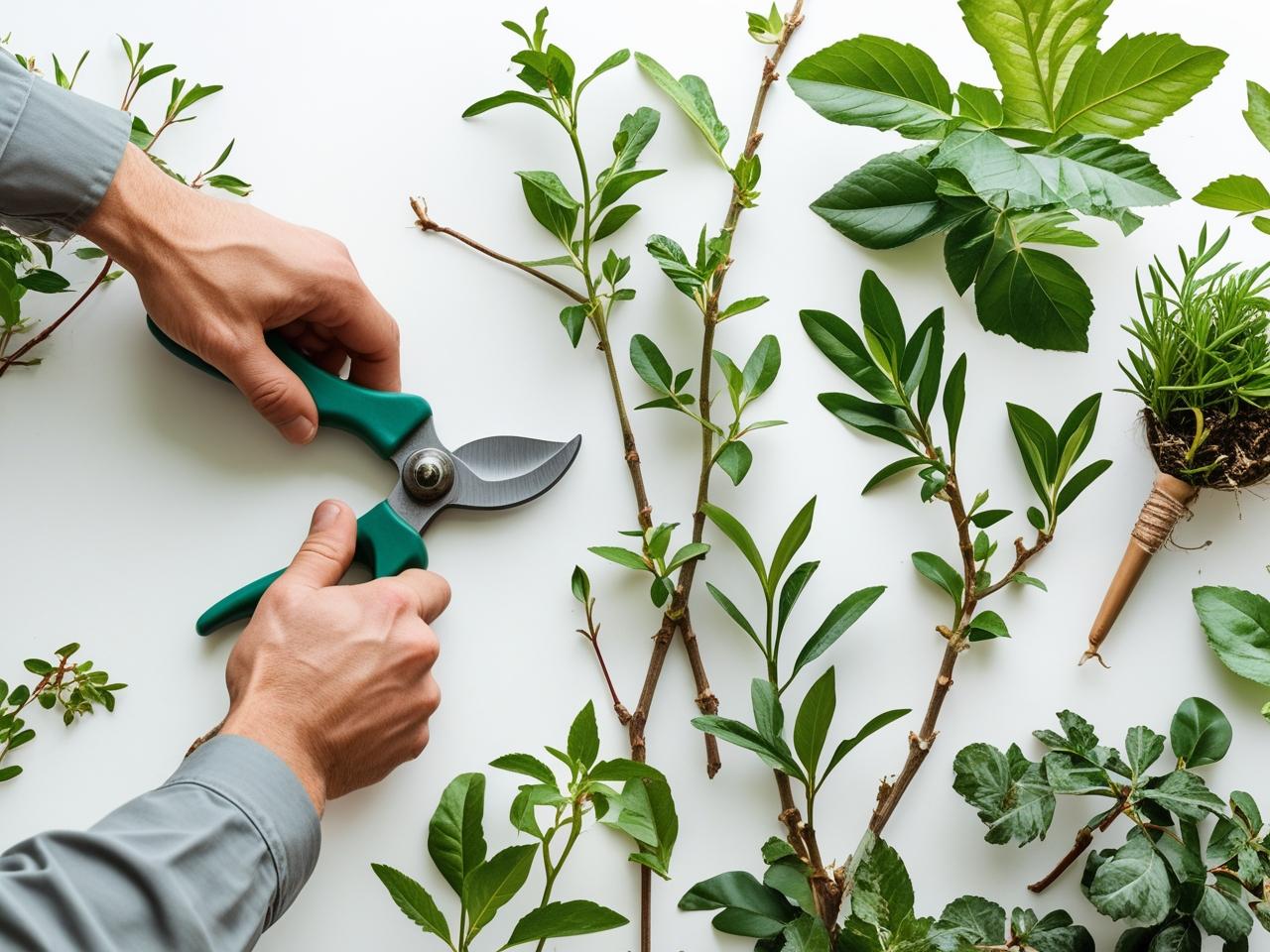Pruning might sound intimidating, but when done correctly, it’s one of the best things you can do for your plants. Thoughtful trimming promotes healthier growth, brighter blooms, better shape, and even disease prevention. Whether you’re dealing with houseplants, flowering shrubs, fruit trees, or garden vegetables, mastering the art of pruning will help you grow stronger, more attractive plants. Here’s how to prune your plants step by step—and why it matters.
Why Pruning Matters
- Improves plant health
Removing dead, damaged, or diseased branches boosts air circulation and light inside the plant, helping it resist pests and fungus. - Encourages growth and blooms
Cutting back certain parts sends energy into developing new shoots, fuller foliage, or more flowers. - Corrects shape and size
Pruning keeps plants neat and allows you to manage height, spread, and form. - Increases fruit production
In fruiting plants, selectively pruning helps focus energy on fruit-bearing wood.
When to Prune: Timing Is Key
Different plants respond best to pruning at specific times:
- Early spring (before new growth starts):
Ideal for most flowering shrubs (rhododendron, lilac), vines, young trees, and spring-blooming plants. - Late spring / early summer (after flowering):
For spring-flowering shrubs like azalea, hydrangea, or those that bloom on old wood. - Late summer / early fall:
Good for summer-blooming plants (but avoid pruning in late fall or winter—it can encourage tender growth vulnerable to frost). - Dormant season (winter, for deciduous trees and shrubs):
Helps shape the plant and remove dead wood, while easier to see structure without leaves. - Ongoing spot-pruning (anytime):
Remove clearly dead, diseased, or crossing branches as soon as spotted.
Gather the Right Tools
Well-maintained tools ensure clean cuts and healthier plants:
- Hand pruners: Ideal for stems up to ½ inch thick. Keep the blade sharp.
- Loppers: Ideal for branches between ½–1 inch thick.
- Pruning saw: Needed for thicker branches on trees and shrubs.
- Hedge shears: Use for shaping hedges and topiaries.
- Gloves and—and for bigger work, safety glasses for protection.
Clean tools between cuts with rubbing alcohol or diluted bleach to prevent disease spread.
Pruning Basics: How to Make the Cut
- Cut just above a bud or node
This encourages new growth to sprout in the right direction. - Angle the cut away
Angle your cut slightly upward and away from the bud to repel water. - Remove dead or diseased wood first
Cut out black, brown, brittle, or dried wood before anything else. - Thin out the center
On denser plants, remove inward-facing stems to improve airflow. - Cut back to outward-facing buds
Encourage outward growth for a broader shape. - Don’t over-prune
Avoid removing more than ⅓ of the plant at a time unless it’s being rejuvenated.
Pruning by Plant Type
Flowering Shrubs
- Old-wood bloomers (e.g., lilacs, azaleas): Prune after they bloom in spring.
- New-wood bloomers (e.g., hibiscus, butterfly bush): Prune in late winter before new growth emerges.
- Rejuvenation pruning: Every 3–5 years, remove older, thicker stems at the base to encourage fresh growth.
Fruit Trees and Berry Bushes
- Prune apples, pears, peaches in late winter during dormancy. Remove crossing limbs and thin the canopy.
- Blueberries, raspberries: Remove a few oldest canes at the base each year to promote new growth; thin overcrowded stems.
Roses
- Hybrid teas, floribundas: Prune in early spring just as buds swell. Remove dead wood and shape.
- Shrub roses: Light pruning after flowering and occasional rejuvenation in early spring.
Houseplants
- Use hand pruners or scissors to trim leggy stems and yellowed leaves anytime. Pinching back (removing the stem tip) on vining plants encourages bushier growth.
Vegetables
- Tomatoes: Remove lower leaves that touch soil and suckers (side shoots) between the main stem and branches.
- Peppers, eggplants: Light pruning to remove dying leaves or protect fruit from rot.
Special Techniques
- Heading back: Cut part of a shoot to encourage branching and denser foliage.
- Thinning cut: Remove a whole branch at the source to reduce crowding.
- Don’t top trees: Avoid cutting the main leader—it weakens structure and invites disease.
Dealing with Topping & Rejuvenation
- Rejuvenation: For old or overgrown shrubs, cut back up to ⅓–½ of branches at ground level to encourage vigorous comeback.
- Avoid topping trees—it damages structure and leads to weak regrowth.
After Pruning Care
- Clean up debris to prevent pests and disease.
- Mulch to conserve moisture and suppress weeds near newly pruned plants.
- Water and fertilize gently—but avoid pushing new hard growth in fall.
- Monitor for pests and growth responses in the weeks following pruning.
Common Mistakes to Avoid
- Cutting too close to the trunk or main stem (leaving a “flush cut”).
- Cutting too far from a bud, leaving stubs that can die back.
- Pruning too late in the fall or in harsh frost conditions.
- Forgetting to disinfect tools between plants.
- Over-pruning, leading to stress or shock.
Troubleshooting Tips
- Bleeding sap in spring? It’s usually okay. Don’t panic unless excessive. Seal deep wounds with pruning paint.
- Plant didn’t regrow? It may need fertilizer, water, or more light exposure.
- Plant looks sparse after pruning? Continue care—it may take a season to fully recover.
Final Thoughts
Fear of pruning holds many people back—but it’s a simple, essential way to strengthen your plants. When done thoughtfully, pruning improves plant health, aesthetics, blooms, fruit production, and vigor. With the right timing, tools, and technique, you’re set to give your garden or potted plants the careful trims they deserve.
Pruning may feel daunting at first, but like any skill, it becomes easier with experience. After a few seasons of observation and practice, you’ll find your plants are healthier, more beautiful, and more manageable than ever.

